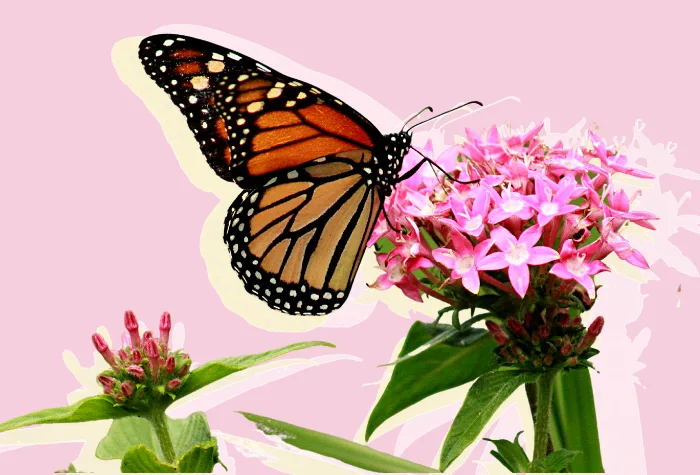
California sees 50X increase in monarchs over last year
It's not clear if the numbers are a blip, or indicative of a long-term growth trend.
Monarch butterflies have been battling numerous threats. Deforestation, extreme weather events, and loss of milkweed - a crucial food source for caterpillars - are causing numbers to dwindle.
This year, there is promising news: nearly 100,000 butterflies have made their way to the California coast to ride out the winter months, a figure that is 50 times higher than the year prior. The Thanksgiving Butterfly Count only logged 2,000 butterflies in 2020, according to a blog post by the Xerces Society for Invertebrate Conservation.
The total has been logged by volunteers and the final tally could end up being larger. A final report will be released in January.
Still, the showing only represents a fraction of the butterflies that made their way to the west coast in years past. According to Business Insider, numbers used to be around the half-million mark, a figure that hasn't been breached since the 1990s.
Speaking with Business Insider, Sarina Jepsen, director of the endangered species program at the Xerces Society, said scientists aren't sure if 2021 traffic represents a recovery, or if it's a matter of luck.
"It is not uncommon at all for any insect population to bounce around from year to year, to have pretty dramatic shifts in the size of its population," Jepsen said.
Part of the boom could be due to favourable weather conditions in monarch breeding grounds in Mexico and California (they prefer warm and dry summers, followed by cooler falls). Or, recent wildfires that impacted migratory paths may have also played a role.
For now, experts are keeping an eye on the monarchs, and hoping their numbers are indicative of a long-term trend.
"With only one year of a population increase, it is impossible to say whether this is the population clawing its way back from the brink or a blip in the continuation of the migration’s decline," Xerces writes on its blog.
"We won’t know this until we have more years with either more or fewer monarchs."
VIDEO: WATCH A MONARCH BREAK FREE OF ITS CHRYSALIS
MONARCHS IN MEXICO
Monarch populations are fluctuating in Mexico as well, according to Cornell University's Phytophagy Lab.
In 2018-2019, 300 million monarchs were observed wintering in Mexico - one of the most impressive gatherings since the early 2000s. And the numbers were especially reassuring, given less than 60 million monarchs were wintering in the area in 2014.
About 150 million were spotted in the area in 2020, a decline of about 50 per cent from the year before.
MONARCH AND POLLINATOR HIGHWAY ACT
Earlier this year, U.S. officials passed the Monarch and Pollinator Highway Act, which will provide $2 million per year from 2022 to 2028 in grants to support the planting of pollinator-friendly plants on roadside and highways. The planting of milkweed will be included in those plans, which help support future monarch generations.
HERE'S HOW TO HELP MONARCHS
Milkweed plays a crucial role in the monarch's life cycle - their leaves are the only things they eat in the caterpillar phase.
In some parts of Canada and the U.S., more than 90 per cent of it has vanished due to agricultural practices.
Helping the monarch can be as simple as planting one of the many species of native milkweed somewhere on your property.
You can take that a step further by setting up a monarch waystation and registering it online with monarchwatch.com.
Waystation kits can be purchased through the organization, and they include everything needed to help monarchs along their journey.
*Thumnbail created by Cheryl Santa Maria. Monarch image: Ana Chang/Getty Images. *











